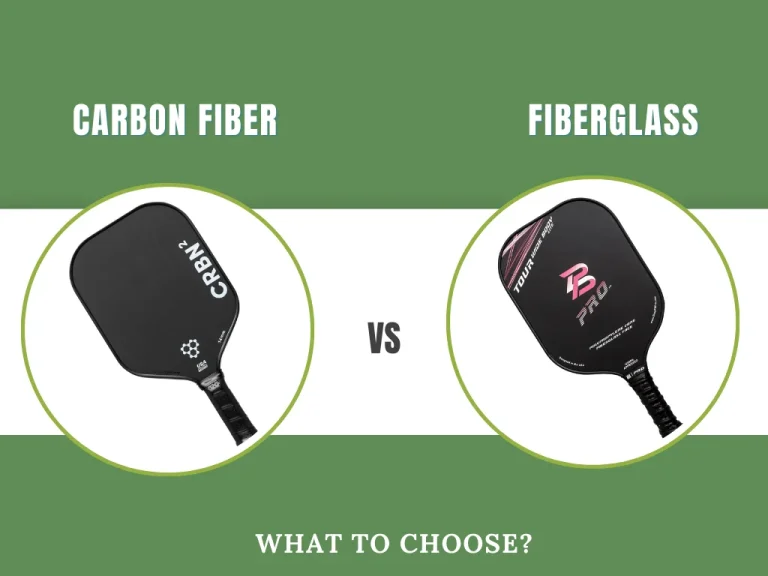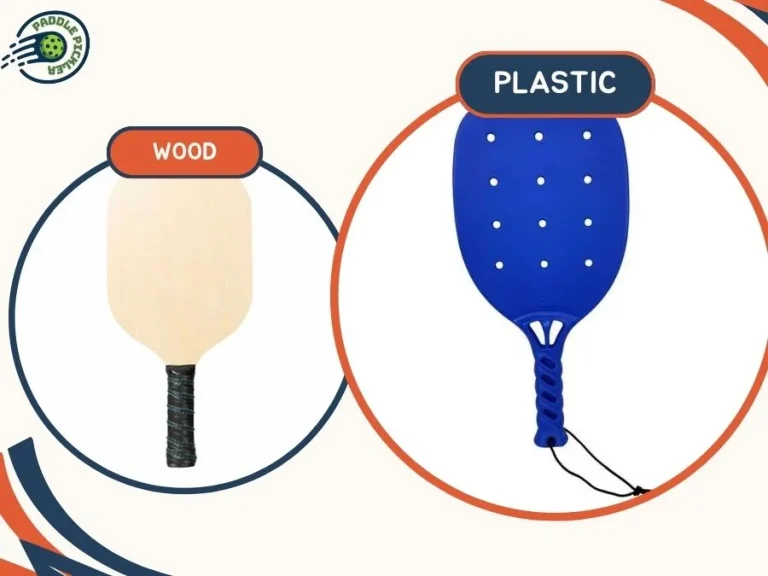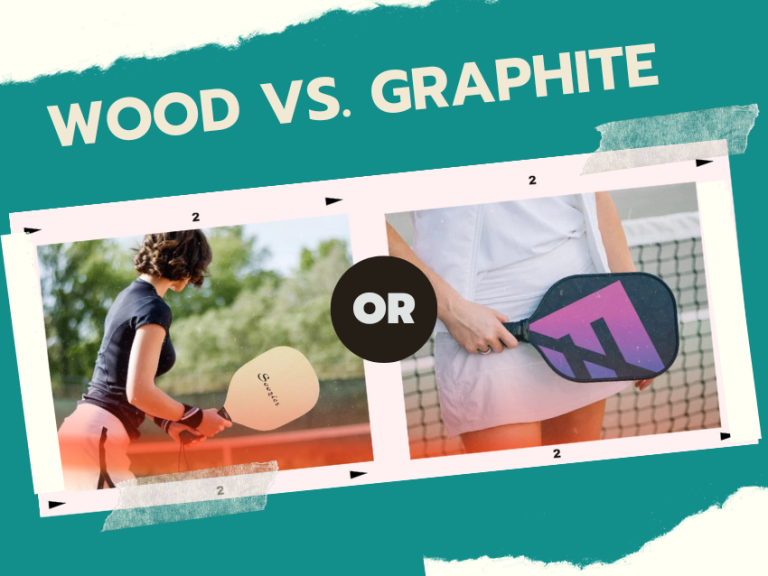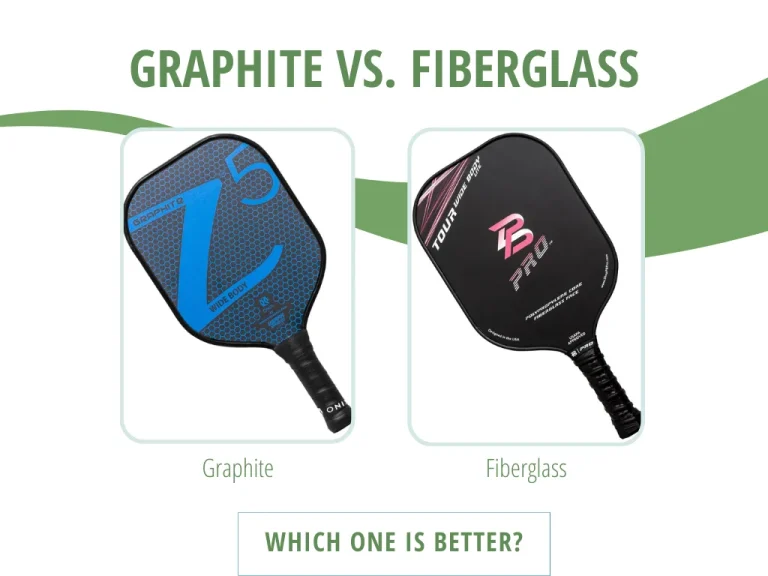Whether you are an experienced player or are beginning, choosing the right material for your pickleball paddle may influence your performance on the court. Composite and graphite pickleball paddles are the two most prominent among the many available. They stand out for their unique qualities and performance advantages. But is graphite or composite pickleball paddle better?
Every kind of material has positive and negative aspects. This article will analyze the main distinctions between graphite vs. composite pickleball paddles after many years of playing pickleball and on-hand tested over a hundred paddles. We also do deep research to confirm the legitimacy of information. This will assist you in selecting the material that most closely matches your playing preferences and style.
Key Takeaways
- The combined materials of composite paddles provide strength, control, and power.
- Graphite paddles are lightweight and stiff, allowing quick reactions with precise shot placement.
- Composite paddles are great for beginners due to their affordability and balanced performance.
- Graphite paddles suit advanced players with their control, lightweight, and reduced vibration.
Overview
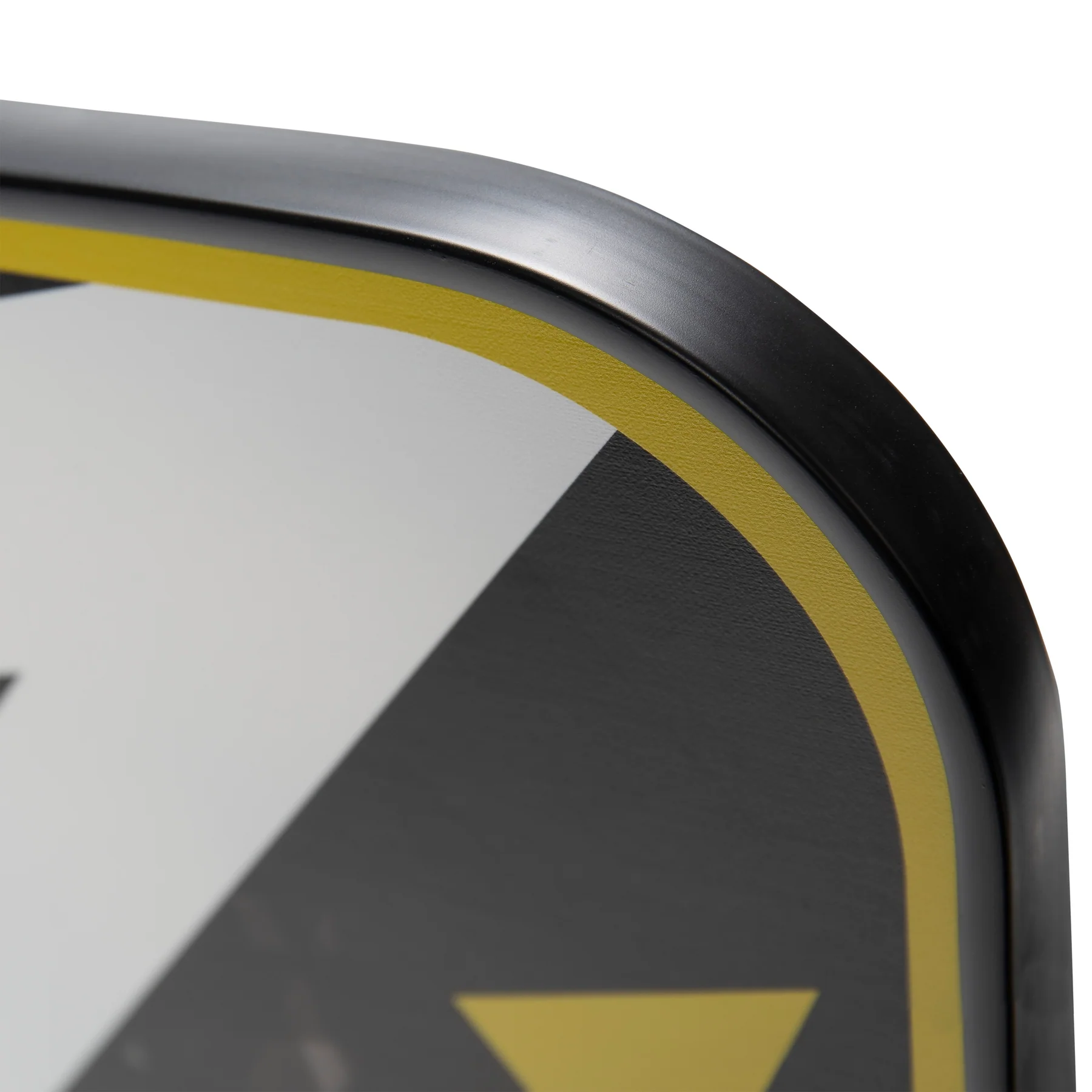
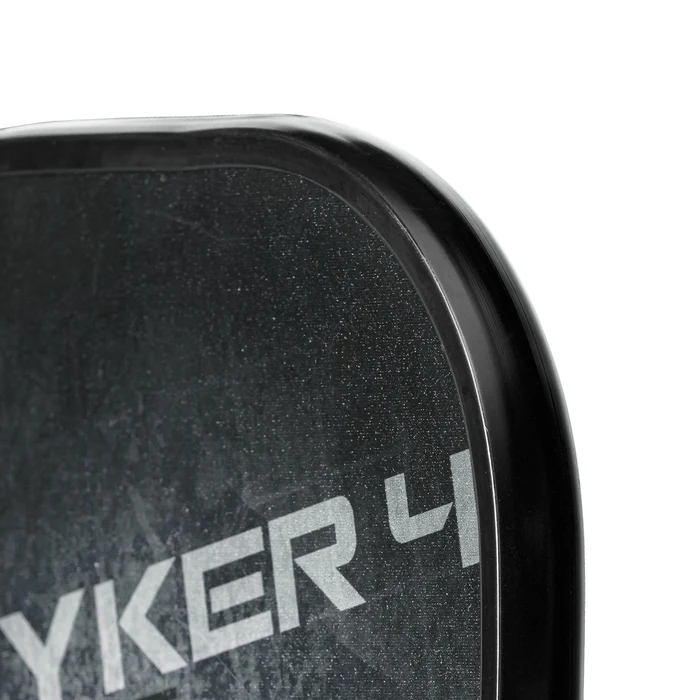
A pickleball paddle made of a combination of various materials is called a composite paddle. It is often made up of a honeycomb-structure core sandwiched between fiberglass or carbon fiber layers. The layers are fused at high pressure and temperature to form a strong yet lightweight paddle. Its multi-material structure seeks to balance durability, control, and power.
A graphite pickleball paddle is a type of paddle made from many layers of graphite or graphite composite. Graphite was chosen for its lightweight, which is associated with high strength and stiffness. Thus, making it an ideal material for paddle construction.
Table Of Comparison: Composite vs Graphite Paddle
In the in-depth comparison table below between composite vs graphite pickleball paddle, let’s compare the features of these two paddle materials.
| Key Note | Composite Pickleball Paddles | Graphite Pickleball Paddles |
|---|---|---|
| Materials | Fiberglass, carbon fiber, or both. | Graphite |
| Durability | About 2 – 3 years, depending on use and care | About 1 – 2 years, can be more prone to wear and tear |
| Weight | From 7.5 to 9 oz | From 6 to 8 oz |
| Performance | – Balanced power and speed – Good control and accuracy – Adequate spin control for most players – Standard grip, which can cause wrist fatigue | – High power and speed – Excellent control and accuracy – Superior spin control for advanced shots – Thinner & ergonomic grip |
| Grip circumference | Standard grip sizes are comfortable for most players | Often various grip sizes, accommodate different hand sizes and preferences. |
| Touch and feel on the ball | Provides solid contact and feedback | Smooth feel with precise touch |
| Price | $50 – $150, more affordable options available | $80 – $200, generally higher due to materials and design |
| Users | Suitable for players of all skill levels and playing styles. | Preferred by advanced players. |
Key Differences Between Composite & Graphite Pickleball Paddles
Explore and analyze in depth how materials affect their durability, weight, performance, cost, and sound in the following sections.
Materials
A pickleball paddle made of a combination of various materials is called a composite paddle. It is often made up of a honeycomb-structure core sandwiched between fiberglass or carbon fiber layers.
The layers are fused at high pressure and temperature to form a strong yet lightweight paddle. Its multi-material structure seeks to balance durability, control, and power.
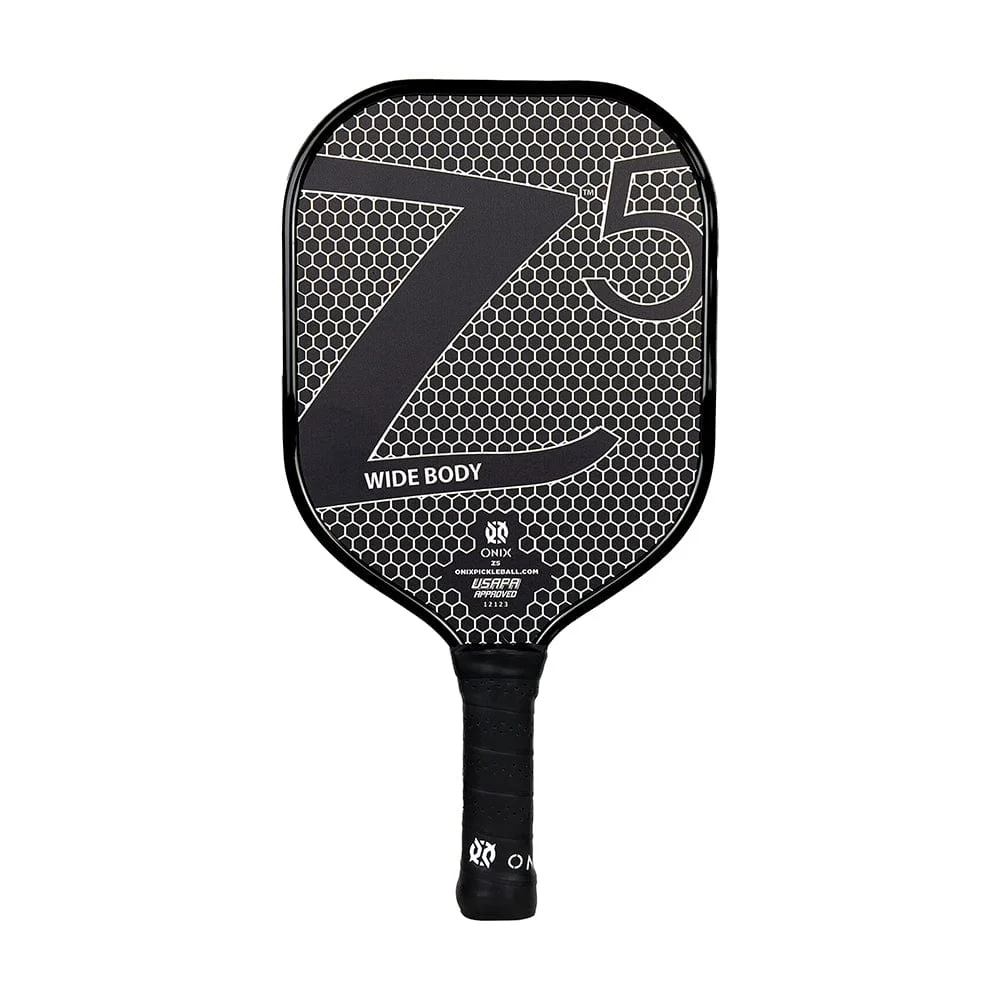
A graphite pickleball paddle is a type of paddle made from many layers of graphite or graphite composite.
Graphite was chosen for its lightweight, which is associated with high strength and stiffness. Thus, making it an ideal material for paddle construction.
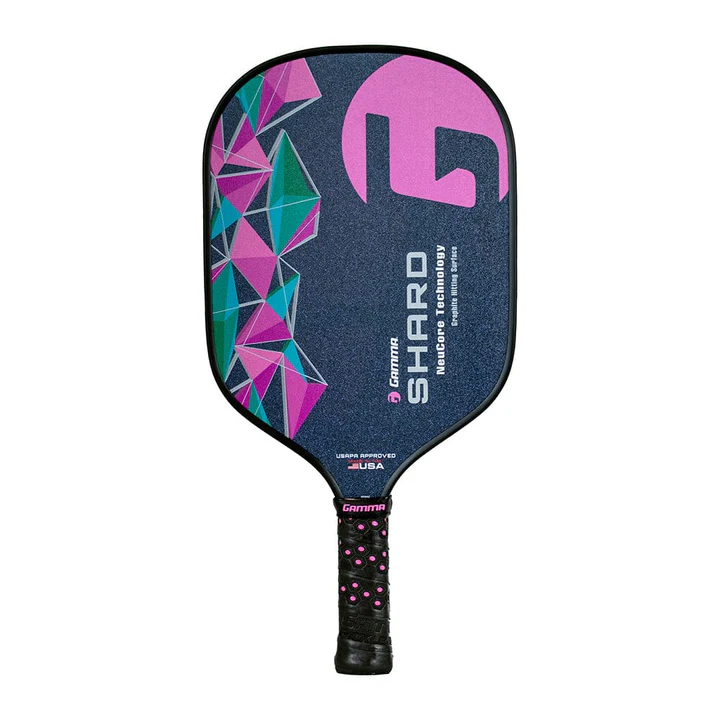
Durability
Composite pickleball paddles are more long-lasting than graphite ones due to their structure and material properties. With proper care, composite paddles can last 2 to 3 years while graphite paddles have a lifespan of only 1 to 2 years.
Graphite is a lightweight and stiff material. Its structure consists of rings of six carbon atoms arranged in wide-spaced horizontal sheets. Each carbon atom bonded to three other atoms by single bonds, creating an unstable structure. This makes graphite hard but brittle, easily cracking under strong impact.
Meanwhile, the composite structure with the matrix and the reinforcement material. This structure combines materials with different hardness and toughness, balancing durability and impact resistance. The reinforcement material has high hardness, helping the paddle withstand impact forces. And the matrix materials help absorb impact energy and limit cracking.
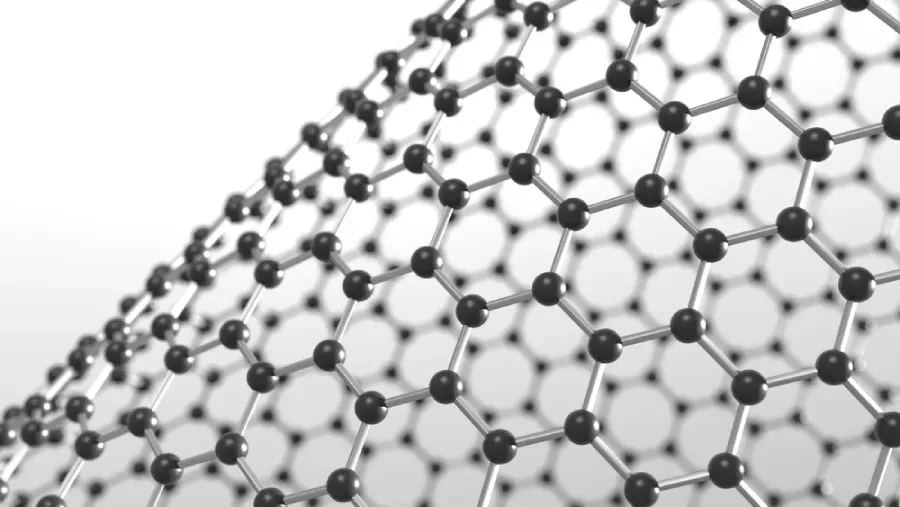
Weight
The graphite pickleball paddles are a bit lighter than composite paddles. Paddles made of composite material weigh between 7.5 and 9 ounces. Graphite paddles are often lighter, weighing between 6 and 8 ounces.
Because graphite is less dense than most of the materials used to make composite paddles, there is a weight differential. Graphite paddles often have a less thick paddle face due to the material’s inherent stiffness. As a result, graphite paddles weigh less. Meanwhile, composite paddles may have a thicker paddle face for added durability or incorporate extra materials for specific playing styles.
Performance
For Power and speed
Composite paddles allow players to create greater force than graphite ones. Composite paddles gain part of their power due to the interlacing of layers of fiberglass or carbon fiber over a polymer core. This design provides a large increase in power for hitting the ball with the paddle. Moreover, increased weight also helps build momentum, and allows pickleball players to generate more forceful shots.
Weight and velocity are two related physical quantities that are proportional to each other in physics. Hence, increased weight may slow down swinging speed and rapid maneuverability.
Graphite paddles are often lighter than composite paddles, they may not provide as much power. Their lightweight, though, enables faster reaction times.
For Control and accuracy
Graphite paddles are considered superior in both control and accuracy to composite ones. Graphite construction is lightweight and stiff. This will allow for a very responsive feel, translating into excellent control over the ball. The lighter weight hence gives quick adjustments and precise movements. Because of this, players make delicate touch shots with consistent performance.
The multi-layer structure of the composite enhances the grip on the ball. This allows players to impart spin and maintain better control during play. You can make it easier to perform strategic shots like dinks and drops. The heavier weight of composite paddles also contributes to a stable feel and reduces errors.
For Spin control ability
In general, composite paddles have higher spin control than graphite paddles. The reason lies in the texture and construction of the paddle surface. It often features fiberglass or carbon fiber layers designed to enhance spin generation. Because of this, players put more spin on their shots. This is ideal for a player to create advanced spin shots.
In contrast, graphite paddles tend to have a smoother surface. So they are less effective at generating spin but excellent at control and accuracy.
For Handle design and comfort
Almost all graphite paddles have better handle design and comfort than composite ones. They offer thinner, ergonomic grips for a secure hold and a natural feel to drop hand fatigue during long sessions. Lighter weight relieves less stress on the wrist and arm. Thus, allowing the player to maintain a comfortable hold without struggling.
A composite paddle is a bit heavier. It quite has standard or thicker grips. While providing stability, it may feel bulkier than graphite paddles. The added weight of the composite paddles can increase the arm and wrist strain. This results in fatigue through longer matches.
Which Pickleball Paddle Is Quieter?
These composite paddles create a far louder and sharper sound at ball contact compared to the graphite paddles. This distinctive “crack” or “pop” is due to the composition of materials used in composite paddles that tend to amplify the sound. The sound level for composite paddles ranges between 80 and 95 decibels, depending on the specific construction and material used.
In contrast, graphite paddles have quieter, more subdued sound. Graphite paddles are lighter and stiffer, which accounts for softer and less resonant impact noise. The range of the sound level for graphite paddles runs from 70 to 85 decibels.
On-hand Experiences
When I first held a composite pickleball paddle, I immediately noticed its sturdy feel. It offered a great mix of power and control in my games. The paddle’s feel upon impact is softer, so I feel excellent touch and control. However, the standard handle sometimes causes slight wrist fatigue during long sessions. Despite this, its durability and balanced performance made it my reliable choice on the court.
In contrast, picking up a graphite paddle was a different experience. Its lightweight design made it incredibly easy to handle. It was making quick, precise movements effortless. I could play longer without arm fatigue. The control and accuracy were outstanding, making each shot feel crisp and responsive. The reduced vibration added to the smooth feel of every hit. But when I generated power, it took a bit more effort than composite paddles.
Which Surface Material Is Better?
Graphite Surface
- Lighter weight enhances maneuverability and reduces arm strain.
- Stiffness provides high control.
- Faster swing speeds improve the player’s ability.
- More expensive due to high-quality materials and advanced techniques.
- Less power, requiring more effort for forceful shots.
- Less spin generation, limiting spin-heavy play.
Composite Surface
- Greater power for forceful hits.
- The surface enhances grip for easier spin.
- Affordable with balanced performance and cost-effectiveness.
- Durable and withstand frequent use and impact.
- Heavier weight affects swing speed and maneuverability.
- Less control and responsiveness.
- The louder sound may be distracting.
Composite Vs Graphite Paddle: What Should I Choose?
Choose composite pickleball paddles if:
- You are a beginner: The balanced performance of composite paddles is well-suited for beginners who are developing their skills.
- You focus on power: Composite paddles offer more power. They are ideal for players who like to drive the ball with great force.
- You prefer spin shot: If you often use spin to control your shots, the composite surface will help you generate more spin.
- You value durability: Composite paddles are great for players who need a paddle that can withstand rough conditions or frequent games.
- You have a limited budget: Composite paddles are more affordable, offering good performance at a lower cost.
Choose graphite pickleball paddles if:
- You are an intermediate or higher: Graphite paddles are excellent for players who have refined their skills and seek the enhanced precision, speed, and comfort that premium paddles provide.
- You focus on control and precision: A graphite paddle provides superior control and responsiveness. It also enhances your accuracy on the court.
- You prefer lightweight and speed: This lightweight facilitates faster swings and quicker reactions.
- You want comfort and reduced vibration: Graphite paddles reduce impact vibrations. This will cut arm fatigue and provide a more comfortable playing experience during long matches.
Final Though
Think about your ability level, preferences, and style when you choose between graphite and composite paddle.
- Composite paddles are appropriate for players of all skill levels because of balance, durability, power, and control.
- Graphite paddles excel at offering lightweight, precise control and strong shots.
Because of this, they are excellent for players who value both speed and precision. Remember to take the paddle’s weight, shape, and brand into account as well. I hope you’ll locate the “best” paddle for each person.


